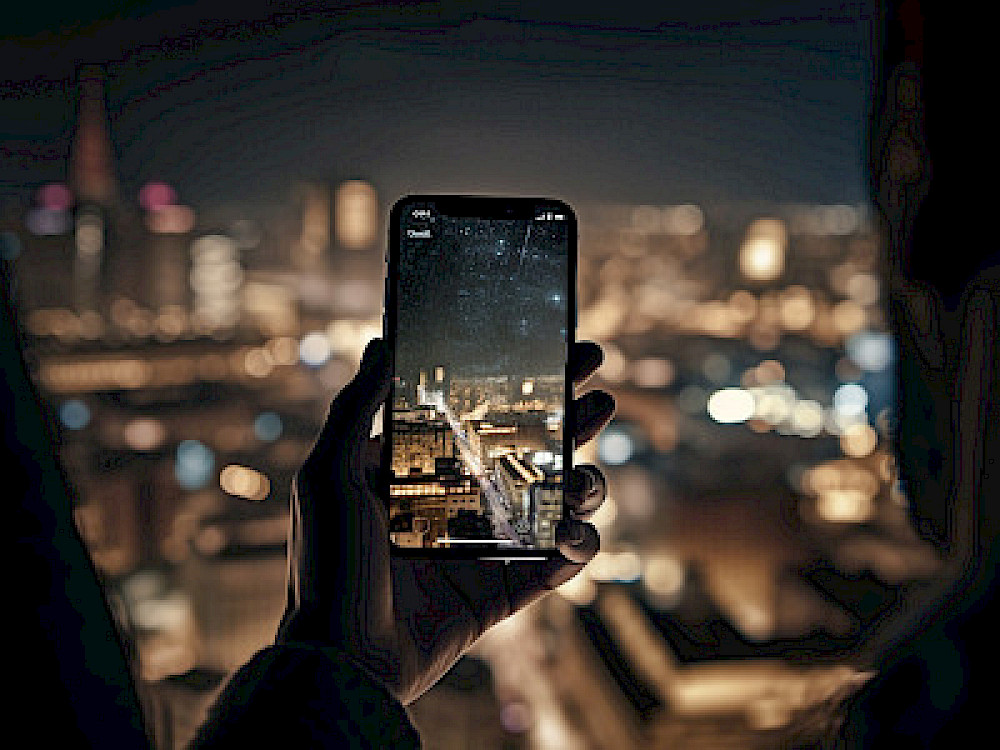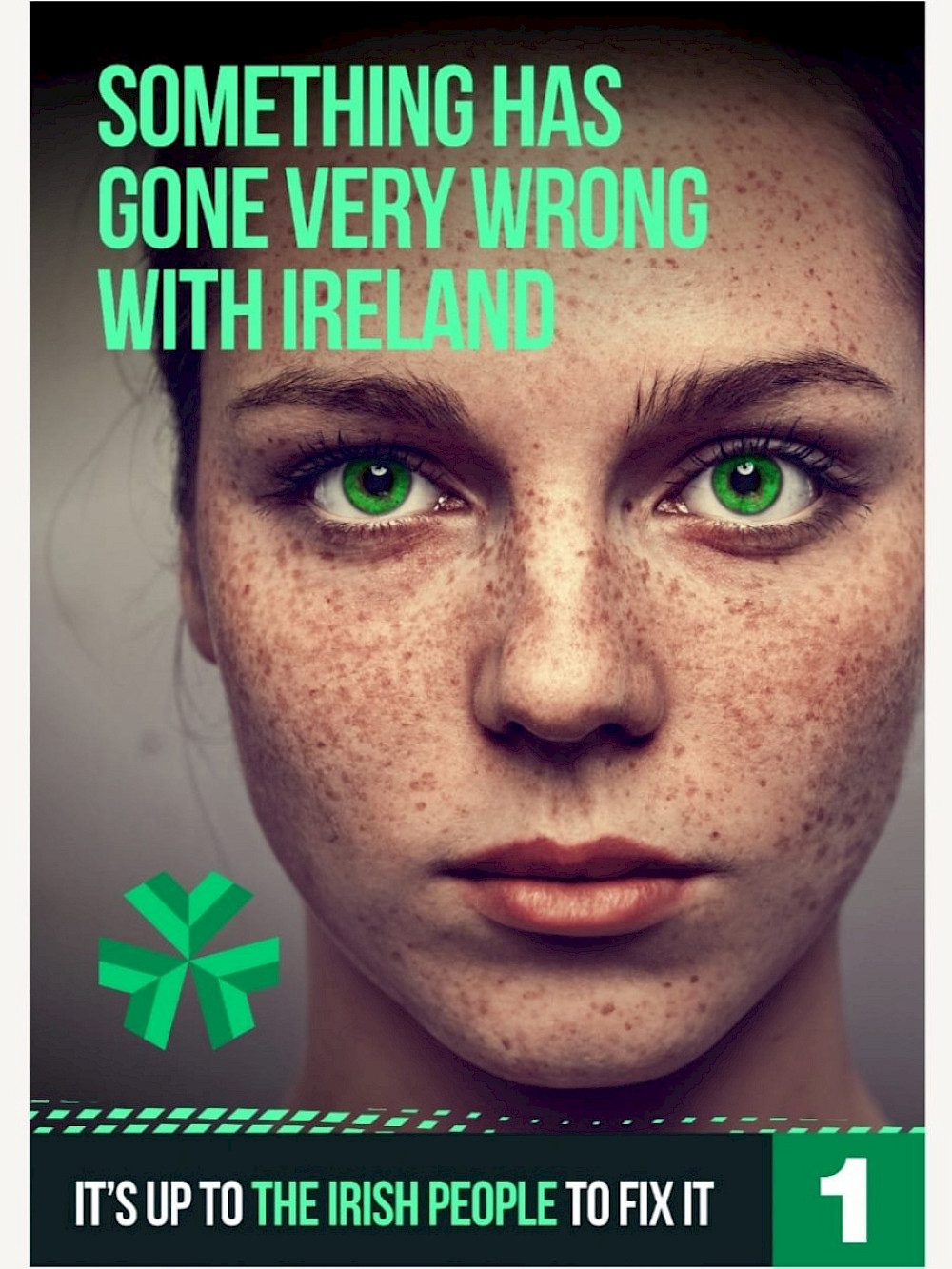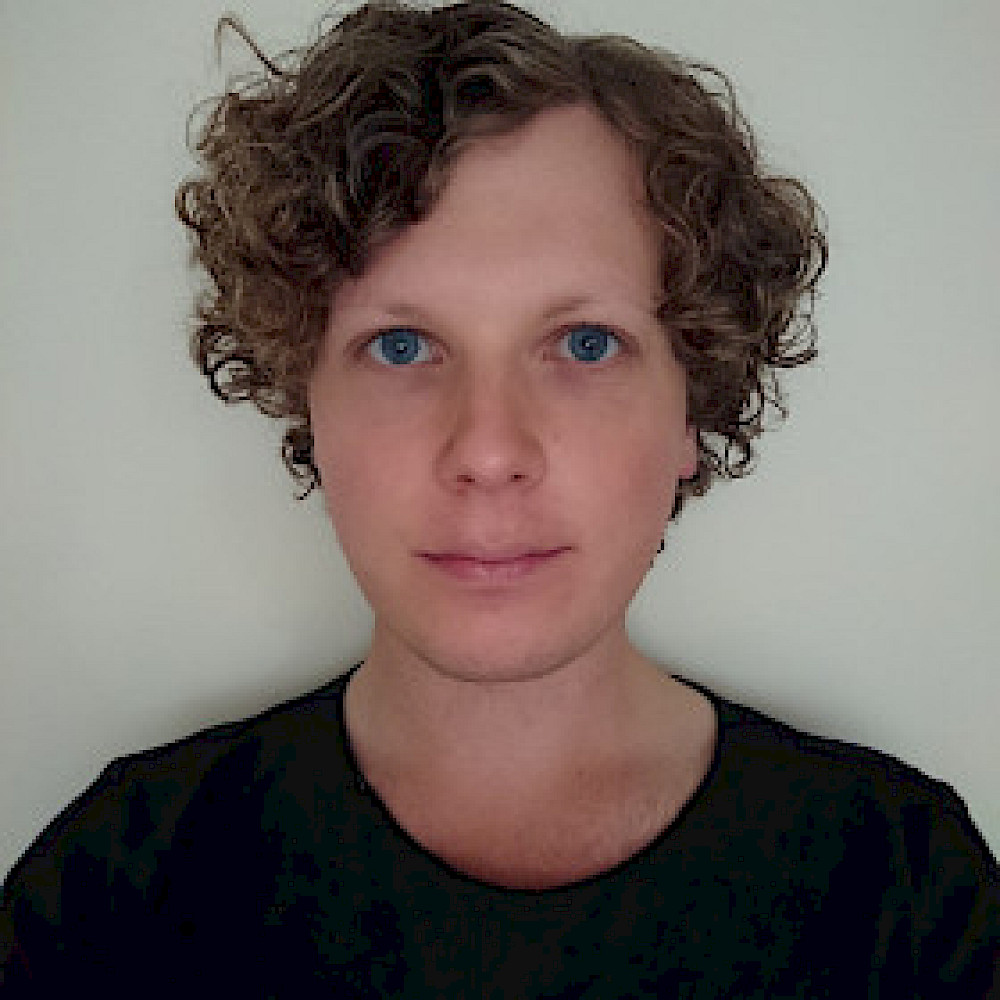As part of a series with EDMO Ireland on the European and local elections, Dr Shane Murphy examines the eye-catching use of graphics and AI by The Irish People party.
The Irish People are a newly formed nationalist political party currently running candidates in both the European and local elections. They do not view themselves as a party in the traditional sense, but rather as a group of likeminded independents with a number of shared values and principles, who benefit from a common branding. The party is led by Anthony Cahill an engineer from Salthill Galway who is running to be an MEP for the Midlands Northwest Constituency.
Cahill has stated that the Irish People stand in opposition to a "crazy ideology" with regards to migration, the Russia-Ukraine War, and gender identify. These issues are, he says, driven by NGOs who “control government policy, and to a large extent, the media narrative”. He has also claimed that "our leaders have gone rogue" and that “Ireland has been too generous” with immigration and that “it’s the government and the NGOs that have welcomed everyone”.
Other notable party candidates running for seats as MEPs include Andy Heasman and Ross Lahive. Heasman describes himself as “an outspoken champion of child protection” and “devout Catholic”. He is running in the Dublin constituency. Lahive describes himself as “a carpenter by trade […] leading the charge in protecting children from gender ideation and sexualisation”. He is running in Ireland South. Both Heasman and Lahive have amassed online followings in recent years as a result of their vocal opposition to Covid-19 lockdowns and the LGBTQ+ community. A further 54 candidates are running in the local elections under the Irish People branding.
Eye-catching posters
A notable aspect The Irish People’s campaign is the use of election posters. Typically, election posters feature the names and faces of candidates along side party logos. Most of The Irish People’s posters ignore these conventions. Instead, their posters focus on key party issues. Individual posters include graphics with white text on a black background and The Irish People’s green logo at the bottom. The posters can be somewhat cryptic. For instance, one poster reads “Rural Farmers know CO2 is Plant Food not Poison” with the word ‘rural’ in giant text. This message communicates climate-change scepticism and implicit support for farmers, albeit in a somewhat indirect way.
Many posters are vague. One reads: “Good vs. Evil – This is a Spiritual Battle”, which echoes the rhetoric of the QAnon conspiracy theory while broadly appealing to religious voters. Other posters are more overtly conspiratorial. For example, one poster reads “eth.no.cide – noun - ɛt.nɔ.sid the deliberate and systematic destruction of a culture or ethnic group”, likely a reference to the Great Replacement conspiracy theory. Another poster reads: “NGOs – How Did Extremist NGOs Capture Government Policy and The Media”.
This approach clearly limits candidates’ ability to build name recognition and to offer a more personalised statement about priorities. However, this kind of campaigning is likely to be more cost effective for a newly formed party running 57 candidates across the country, none of whom have held office before. It is an effort to establish the brand of the party itself as opposed to any individual candidate.
The impossible faces of Ireland
Notably, the face of The Irish People campaign is not the party leader, Anthony Cahill, or any other candidate. Rather, it is a freckled woman with red hair and impossibly green eyes. This image appears on a widely distributed poster with the caption” “Something has gone very wrong with Ireland. It’s up to the Irish people to fix it”. Irish People candidate Kim McMenamin describes this woman as "representing everythings that's Irish". However, the image appears to be a stock photo of a model uploaded by a Russian photographer in 2015, which has been edited to make her hair red and her eyes unnaturally green.
There are the numerous examples of AI-generated images of people, which have been uploaded across The Irish People’s social media channels. Typically, these are accompanied by quotes that seem to imply why this person is voting for The Irish People, or at very least, why they have become dissatisfied with the status quo. Earlier this year, The Irish People shared an AI-generated image of a young woman with long blonde hair. Wearing an Aran sweater, she is styled as an artist in a room filled with paintbrushes and canvases with images of green landscapes. The image is accompanied by the quote - "I'm tired of policies that don't reflect what real Irish people need or want" - attributed to Meave Kennedy, 32 from Donegal.
Similar posts feature a young nurse wearing green scrubs under caption "Every day, it’s a struggle to say what I really think without fear". This quote is attributed Aisling Byrne, a 27 year old Nurse from Limerick. Another image of a man in a hard hat and orange hi-vis vest accompanies a message reading: "I'm working two jobs, and still can't afford a house in my own country". The quote is credited to Michael O’Reilly, a 45 year old from Dublin. The images all have the uncanny quality that is for now almost unavoidable when it comes to AI generated images of human beings.
The use of non-existent people is ironic, given that The Irish People purport to be representing the “real” people of Ireland. What makes it a particularly strange choice, however, is that the use of fake people leads one to conclude that the party was unable to find real people willing to speak in support of them. This is clearly at odds with their claim that the majority of Irish people hold their views. Of course, politicians have long relied on tropes about support from ordinary people using anecdotes with doubtful basis in reality.
Transparency and Debunking
There are major issues with the transparency of online political advertising in general. The EU only published its rules in March and Ireland’s Electoral Commission does not yet have powers in this area, but has issued voluntary guidelines. AI has complicated the issue further. Nevertheless, there is broad support for a principle of transparency even if that in insufficient.
After scrolling through The Irish People’s social media accounts, I was eventually found one that acknowledged the use of AI. The AI-generated image shows an elderly man with mournful expression alongside the quote "I remember when community meant something here. Now I hardly recognise where I grew up!" (attributed to Liam Murphy, 63 from county Mayo). The caption states that “these are genuine stories told by Irish people represented virtually to protect their identity”. Such concern about the individual’s privacy is odd, however, given that each image is accompanied by the original speakers name, age, location, and often occupation. It also does not explain the lack of transparency in other images. For example, an image posted on 22 May depicts a group of smiling young people canvassing on a sunny day, with a caption advising the readers to vote for nationalist candidates. This does not appear to be connected to any persons whose identity may be in need of protecting.
In recent months there has been a concerning trend of social media users engaging sincerely with AI-generated political content they are unable to recognise as such. Late last year, an image was widely circulated which depicted a homeless woman and her two children sitting outside a tent, in front of a non-descript neo-classical building (likely intended to reflect an area in Dublin’s city centre). The picture, accompanied by a caption “Ireland in 2023”, evoked a number of angry reactions from individuals who did not appear to recognize that it was not real, including one commenter who posted “That is our own people not the unvetted men get them a place straight away” and another who wrote “The Dáil will call us far-right for standings up for our own homeless and the Irish people they don’t care about our homeless as long as their guests are look after open borders”.
TheJournal.ie debunked this story and another AI-generated image that went viral during the protests which took place in Newtownmountkennedy in April and May of this year. It featured a row of Gardaí blocking an enormous crowd of protestors waving tricolour flags and holding non-descript signs. TheJournal’s coverage notes that many users on Facebook, where this image was initially shared, were unable to recognize that this image was AI-generated. Those users were assured by others it was “most definitely real” when doubts were raised.
More recently, TheJournal debunked an image posted to Facebook on 23 May, which has since received hundreds of shares, showing a burning cottage in the Irish countryside. The image is accompanied by text reading “The last time unvetted men were let loose in rural Ireland – Black and Tans”, a clear reference to far-right talking points about the dangers posed by “unvetted” migrants entering the country. Although these examples do not appear to be directly connected with The Irish People, or any political other party, the reaction they received demonstrates that not all audiences will necessarily be able to identify AI-generated content when they see it, highlighting the dangers of sharing AI-generated content in service of political agendas.
Ireland’s Electoral Commission have released clear guidelines relating to the distribution of AI content by campaigns and candidates, stating that such content should be “clearly labelled or otherwise made distinguishable through prominent marking” and should not “knowingly produce or disseminate deceptive AI content with the potential to mislead voters or undermine the integrity of the electoral events”.
With the exception of the one image mentioned above, none of the AI-generated content distributed by The Irish People has been labelled as such. This is concerning, particularly as some of the AI-generated content they have shared is arguably more deceptive and misleading than these previous examples. A post shared on 05 May, during the height of the demonstrations taking place outside a proposed site for asylum seeker accommodation in Newtownmountkennedy, shows a young man with red hair bleeding heavily from his eyes and mouth accompanied by the caption: “I was beaten and pepper sprayed for standing up for my community by those who are supposed to protect us”. The quote is attributed to Michael O’Byrne, a 15 year old student from Wicklow. The image is somewhat reminiscent of a photo that was circulated at the time, showing a young protestor who had been injured during the demonstrations, but whose wounds were significantly less severe. While this post has since been removed from The Irish People’s more public social media accounts, it is still present on their Telegram channel at the time of writing.
Another post shared earlier this year shows bins overflowing with passports at a building labelled as “Dublin Airport” (although it is clearly not any existing airport).The image is accompanied by the misleading caption: “70% of asylum seekers lost their passports between their departure and arriving at Dublin Airport - Irish Department of Justice 2023”. A version of this image was uploaded to TikTok as a short video, where it has been “liked” over 100 times, and received more than 5,000 views, making it one of the party’s most successful posts on the platform.
Finally, an important element of these images is that in many cases, they have been uploaded as short videos. While this may be partially motivated by a desire to share these images across short-form video based platforms like TikTok, it is also possible that this has been done as a way of avoiding detection tools that most large social media platforms employ today, which would result in these images being automatically labelled as AI-generated. While such tools are reliably able to identify AI-generated pictures, they are significantly worse at analysing moving images. A similar approach has been widely covered in relation to AI-generated images of shrimp Jesus and flight attendants which are being automatically uploaded to Facebook accounts in an effort to generate engagement, which have managed to avoid detection by Meta by using the platforms built in 3D photo filter. If this is the case, it may be that The Irish People’s failure to flag their use of the AI-generated content is not a result of negligence, but rather an attempt to evade platform’s automated labelling systems.
Related Projects

EDMO Ireland is one of fourteen hubs established as part of the European Digital Media Observatory (EDMO). Coordinated by Dr Eileen Culloty from Dublin City University (DCU), the EDMO Ireland consortium includes the DCU Institute for Future Media, Democracy and Society (FuJo), TheJournal FactCheck, NewsWhip, and the University of Sheffield. It is part-financed by the European Union to monitor and analyse disinformation; conduct factchecks and investigations; develop media literacy resources; as...



